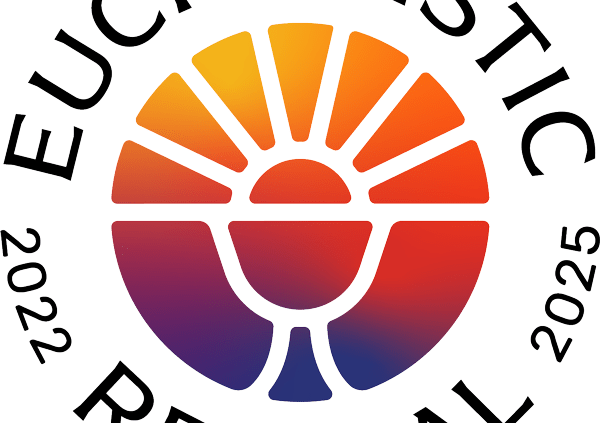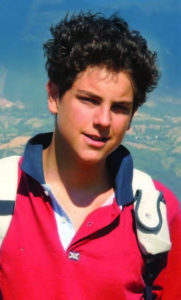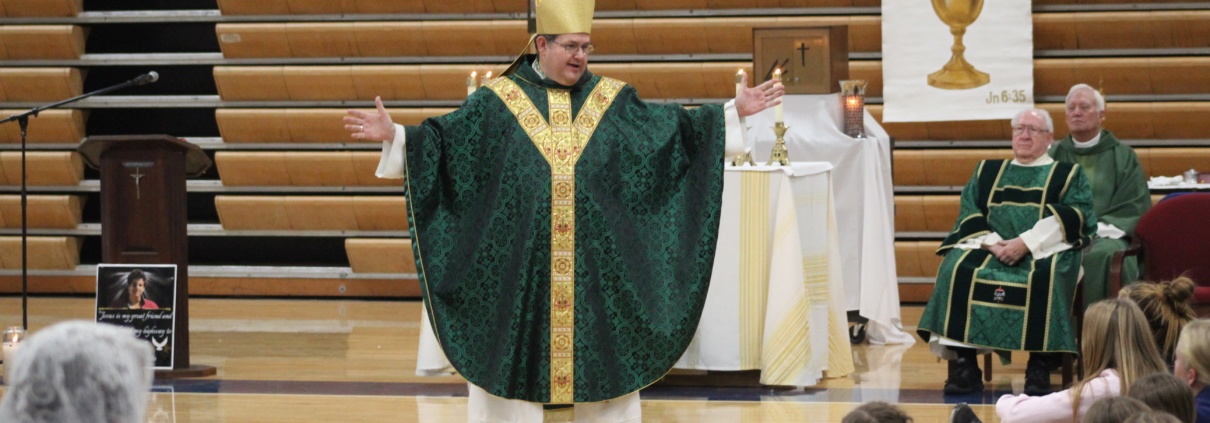Parishes create unique Eucharistic encounters through 40 hour devotions
Laura Keener, Editor
In a recent Sunday Gospel, Peter and the other disciples are in a boat on the sea as the wind and waves are kicking up. Jesus, on the shore, proceeds to walk on the water towards them. Peter asks Jesus to call him to him. Jesus does, and Peter leaves the boat and walks on the water towards Jesus.
“Peter wanted to have a unique encounter with Jesus,” said Father Daniel Schomaker, diocesan director, Worship and Liturgy Office. “He had to get out of the boat in order to do that. He had to get out of the safety of the boat — his comfort area — in order to have an encounter with Jesus.”
Today, Jesus still invites his disciples — you — to a unique encounter with him in the Eucharist — communally at Mass but also individually at adoration. The Catholic Church in the United States is in the middle of a three-year Eucharistic Revival.
This year, on the feast of Corpus Christi in June, the Eucharistic Revival transitioned from the diocesan phase to the parish phase. To help unite the parishes around the Eucharist, Bishop John Iffert, at the request of the diocesan Worship Committee, has asked pastors to host 40 Hours of continual Eucharistic adoration. (See related article page 4.)
These 40 Hours will be scheduled sometime during the year, from now until July 2024, when the revival culminates with a Eucharistic Congress, July 17–21, 2024, at Lucas Oil Stadium, Indianapolis. Discounted tickets for the Congress are available through the diocesan Office of Worship and Liturgy; an application is online at covdio.org.
St. Augustine Parish, Covington, is the second parish to honor Bishop Iffert’s request to host the 40 Hours devotion. The Cathedral Basilica of the Assumption, Covington, who held 40 Hours on the feast of Corpus Christi, was the first. St. Augustine’s 40 Hours will begin Friday, August 5, 7 p.m. continuing until Sunday, Aug. 27, 5 p.m.
Father Schomaker said that at least two people need to be present during Adoration. This, he said, can be difficult for small parishes. To help accommodate parishes, adorers from all parishes in the diocese are welcome and encouraged to volunteer for a half hour or more of adoration at as many parishes as their time allows. Adorers can reserve their time at St. Augustine’s 40 Hours by visiting the parish website, https://www.staugustines.net.
“40 Hours devotions are being held throughout this Parish Eucharistic Revival year at different times so that the faithful will have the opportunity in their parish and at other parishes to spend time in Eucharistic Adoration,” said Father Schomaker. “This way, it’s a parochial celebration but it’s also a diocesan celebration, because we recognize that there is one local Church, which is the Diocese of Covington.”
Spending time in adoration may be new to some. The good news is there is no specific ritual to know, so it’s hard to do Adoration wrong. The only requirement is to come prayerfully and reverently to gaze at and listen to Jesus.
“The beauty of the Church is that her treasure trove of prayer is vast, and there’s not one way to pray,” said Father Schomaker. “In fact, most of the time, we need to remember that prayer requires listening. Prayer is not a monologue. It is a conversation. We have to be able to hear the Lord speak back to us.”
For anyone who likes a little structure in their prayer they are welcome to pray the rosary or the Liturgy of the Hours, or they can bring along some spiritual reading — a book of the saints or a saint, or bring a Bible.
“St. Augustine says that the Sacred Scriptures are love letters from home. Well, let’s read the love letters from the one who loves us,” said Father Schomaker.
The best part of Adoration is taking the time, putting oneself in the presence of the Eucharist, to have that unique encounter with Jesus.
“Peter had to get out of the boat. Sometimes we have to do that too, to get out of our comfort zone,” said Father Schomaker. “Today, the wind and the waves are oftentimes our culture that make quiet difficult. Silence is hard because we’re surrounded by all forms of noise. Get out of the boat. Enter into the silence. Go have an encounter with Jesus.”



